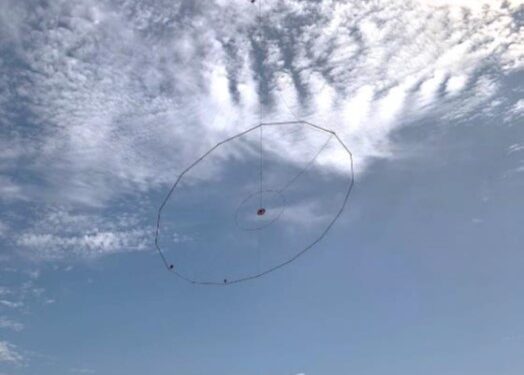Cooper Metals Limited (ASX: CPM) has received positive preliminary results from a Versatile Time-Domain Electromagnetic (VTEM) survey over a significant portion of the Mt Isa East Project in north-western Queensland.
The VTEM survey has identified several potential bedrock conductors that may be prospective for copper-sulphide mineralisation. While VTEM is a powerful first-pass tool for the identification of potential copper-gold mineralisation, it is most effective on iron-sulphide dominated copper-gold deposits (ISCG), which are more likely to conduct an electromagnetic current compared to iron-oxide copper gold (IOCG) mineralisation.
Other geological factors such as the presence of black shale, pyrrhotite and graphitic rocks can produce VTEM anomalies. The survey was completed in three separate blocks with multiple anomalies identified by Cooper’s consultant geophysicist in Blocks 1 and 2.
Desktop ranking and prioritising the anomalies for ground truthing has now been completed. Ground truthing has commenced to further rank targets for follow up geochemistry and/or ground geophysics ahead of potential drill testing.
“The VTEM Max survey has identified multiple anomalies at the Mt Isa East Project worthy of follow up,” Managing Director, Ian Warland, said.
“We are particularly excited about the VTEM response over the Python conductor that doubles the length of the original FLEM anomaly and has identified a new subparallel conductor to the northeast of around 500m in length.
“This is the first detailed airborne electromagnetic survey over this tenure and this new dataset is a significant step forward for continuing to build a pipeline of copper-gold targets at the Mt Isa East Project. Ground truthing of the conductors has commenced and we will provide updates to the market as results come to hand.”
Block 1 VTEM survey results
In 2016, the Qld Government commissioned a VTEM survey at a broad two km line spacing. Reprocessing of the government data by Cooper’s consultant geophysicist led to the identification of a VTEM anomaly near the Python Cu-Au prospect which was subsequently confirmed by a fixed-loop electromagnetic survey (FLEM) in March this year.
Significantly the new VTEM survey has extended the Python conductor to the northwest, doubling the original length of the conductor to approximately 700m and an additional parallel VTEM anomaly of approximately 500m long has been identified just 250m to the northeast.
There are several more subtle VTEM responses identified throughout Block 1, some of which are within favourable lithologies and structural positions for the formation of ISCG mineralisation. In contrast, the VTEM survey did not define any bedrock anomalies over the King Solomon prospect, which based on recent drilling is consistent with the IOCG style mineralisation discovered there.
Cooper’s recent RC drilling intersected significant shallow copper mineralisation including 17m @ 2.2% Cu from 84m including 8m @ 4.3%(22MERC016)2 at King Solomon. The copper-gold mineralisation is hosted in a quartz-carbonate rich rock with peripheral “red rock” alteration typical of IOCG mineralisation.
Block 2 VTEM survey results
Block 2 covers Cooper’s eastern tenement, which has very little previous exploration (Figure 3). There are several VTEM anomalies of interest, with many coincident with regional structures that may have been important for hosting Cu-Au mineralisation.
A strong conductor in the northern portion of the block is approximately 600m long and located at the confluence of two significant faults hosted within Argylla Formation rocks. This formation also hosts Carnaby Resources Ltd Lady Fanny and Nil Desperandum Cu-Au deposits located some 30km to the south of the Block 2 survey area.
Several other conductors also hosted in the Argylla Formation and Leichardt Volcanics were identified in the southwestern portion of Block 2 adjacent to a major north-westerly trending fault.
Next Steps
Ground truth newly identified VTEM conductors, rank and prioritise follow-up ground geochemistry and geophysics ahead of drill testing. For further information please visit: https://www.coopermetals.com.au/












